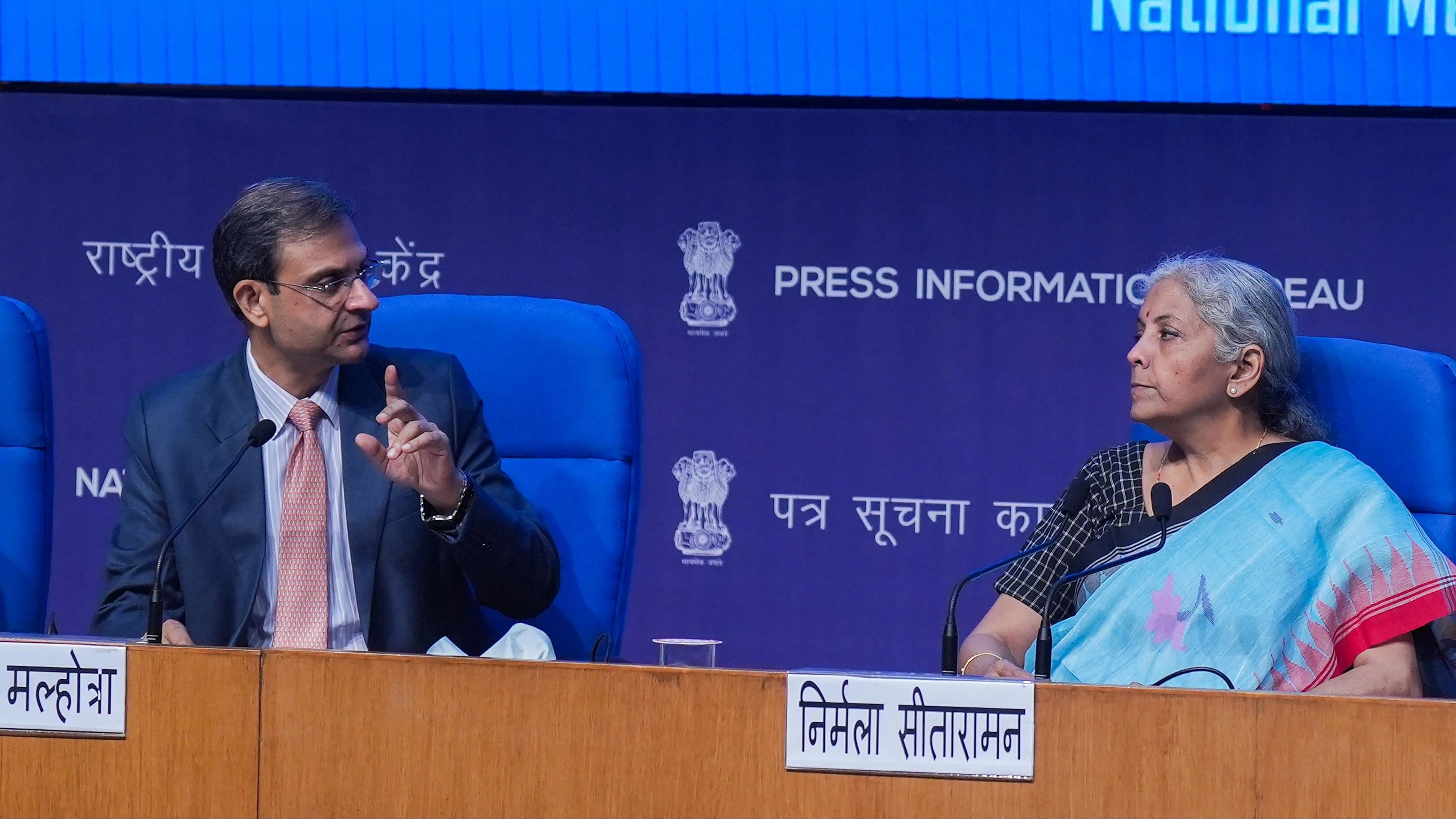
Finance Minister Nirmala Sitharaman with Revenue Secretary Sanjay Malhotra
Credit: PTI Photo
Mumbai: The growth rate of the combined revenue receipts of the 16 largest states has fallen by almost 80 per cent to 5 per cent during April-November from the budgeted 17.4 per cent for the current fiscal, according to a report.
The states have so far borrowed over 37 per cent more than they did last fiscal and given these poor numbers, they will have to borrow heavily this fiscal to service their debt and pay salaries and pensions.
The plunge is due to a contraction in sales tax and lower-than-budgeted growth of state goods and services tax collections (SGST), excise duty and stamps and registrations during the period, restricting the growth of states own tax revenue (SOTR) to 11 per cent. Another reason for the poor numbers is the steep decline in Central grants, Icra Ratings said in a report.
The agency, though, expects an upside in tax devolution in the fourth quarter, its quantum may not be adequate to fully offset the shortfall in grants.
Moreover, even if a sizeable portion of the grants is released by the Centre to states in the fourth quarter, the actual growth of combined revenue receipts is still expected to miss the targeted growth rate by a wide margin, Icra said in the report, which does not include the northeastern and hilly states, Goa and Bihar.
In the first eight months of FY24, the combined SGST, excise duty, stamp duty and registration fee collections of these sample 16 states expanded by 10-12 per cent.
However, sales tax collections contracted by 1.4 per cent during this period, limiting the growth of the SOTR to 11 per cent relative to the budgeted 20 per cent.
Overall, the combined sales tax collections during the reporting period were equivalent to 55 per cent of the budget estimates, suggesting that actual collections would fall short of the budget targets by a sizeable extent for several states.
"Central grants to 13 of the 16 states contracted year-on-year during the reporting period, resulting in a combined decline in grants of 31 per cent in the sample states, while they have budgeted for a whopping 19.8 per cent growth. While we expect the actual tax devolution to exceed the amount budgeted for FY24 by Rs 30,000 crore, it will not be adequate to offset the shortfall in grants," the agency said.
If a sizeable portion of the expected grants is released to the states in Q4, it will narrow the pace of contraction, and the combined revenue receipts growth may slightly exceed the modest 5 per cent in the first eight months while remaining well below the targeted 17.4 per cent growth.
With a 50 per cent share, the SOTR is the single largest revenue head of state, followed by tax devolution of 25 per cent, Central grants of 17 per cent and states own non-tax revenue of 8 per cent. The STOR pie comprises the following 40 per cent GST, sales tax (mostly on fuels and liquor) constitutes 24 per cent, 14 per cent comes from excise duty, 11 per cent each comes from stamp duty and registration fees and other heads.
SGST collections of 12 states expanded by 9-15 per cent during the reporting period, while in Kerala, it rose by a tepid 5 per cent as against its budgeted 28 per cent.
After increasing by 10.4 per cent in FY22 and 13.4 per cent in FY23, the petrol consumption moderated to 6 per cent during the first eight months of FY24. Similarly, after rising from 5.5 per cent in FY22 to 12 per cent in FY23, diesel consumption eased to 6.7 per cent in the first eight months.